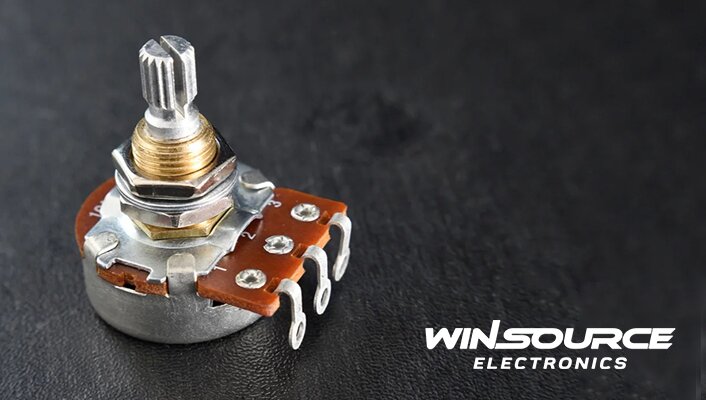
Table of Contents
ToggleIntroduce
Potentiometers, often colloquially referred to as “pots,” are important components in electronics, providing a means of precisely controlling voltage and current within a circuit. This guide explores potentiometers, explaining their concepts, types, functions, and applications, highlighting their widespread use in electronics.
Concept
Fundamental
The working principle of a potentiometer is a variable resistor. They consist of a resistive element with a movable sliding contact or wiper. The wiper’s position on the resistive element controls the resistance and voltage in the circuit.
Resistor Taper
Understanding resistor taper is critical when selecting a potentiometer for a specific application. Linear potentiometers have a consistent change in resistance for each unit of length. This makes them suitable for applications that require a linear connection between knob position and resistance. Logarithmic potentiometers mimic the human ear’s response, making them great for controlling volume in audio equipment.
Type
Single turn and multiple turns
Single-turn potentiometers are the most common and simplest, providing simple adjustment over a full turn.
Multi-turn potentiometers require multiple turns to cover the entire range, providing finer control. These are the first choice in applications where accuracy is critical.
Rotary and sliding
Rotary potentiometers are useful for circular tasks, such as adjusting audio volume, as they rotate.
Sliding potentiometers have sliding wipers. Applications commonly use them when linear motion is more practical. For example, audio mixing boards often have them in fader controls.
Panel Mounting vs. PCB Mounting
Designers create panel mount potentiometers for applications that require external adjustment. The device’s panel mounts the controls, enabling users to easily access them.
Integrated directly onto the printed circuit board, PCB mount potentiometers save space and reduce wiring complexity.
Function
Voltage divider
The main function of a potentiometer is to act as a variable voltage divider. By moving the wiper, the user can control the voltage and current in the circuit with accuracy.
Adjustable resistance
You can use a potentiometer as an adjustable resistor when you use only two of the three terminals. This feature is critical for applications that require precise control of resistance.
Application
Audio equipment
Audio devices like amplifiers and mixing consoles commonly use logarithmic potentiometers. They match volume changes to how humans perceive sound.
Instrumentation
Electronic instruments and test equipment use potentiometers for calibration and adjustment purposes to ensure the accuracy and reliability of measurements.
Control System
Control systems use potentiometers to set voltages, adjust gains, and fine-tune parameters for better performance.
lighting control
Dimmer switches have potentiometers to adjust light intensity, offering both practical and visual advantages.
In conclusion
In short, various electronic devices can widely use the potentiometer as a multifunctional component. Their ability to precisely control voltage, current, and resistance makes them indispensable in industries ranging from audio to instrumentation.
Engineers and hobbyists can improve electronic system efficiency and accuracy by learning about potentiometers. They can do this by applying their knowledge of concepts, types, functions, and applications.
As technology continues to advance, potentiometers remain an enduring cornerstone of the electronics world. Looking for a potentiometer? Click here WIN SOURCE

COMMENTS